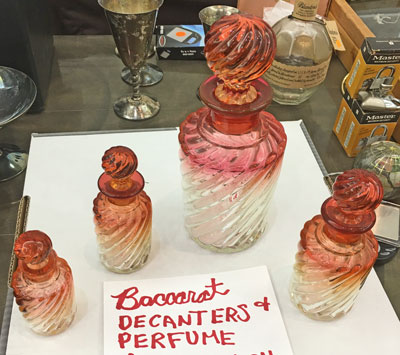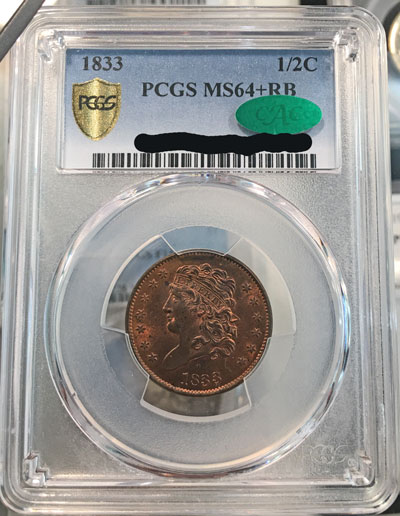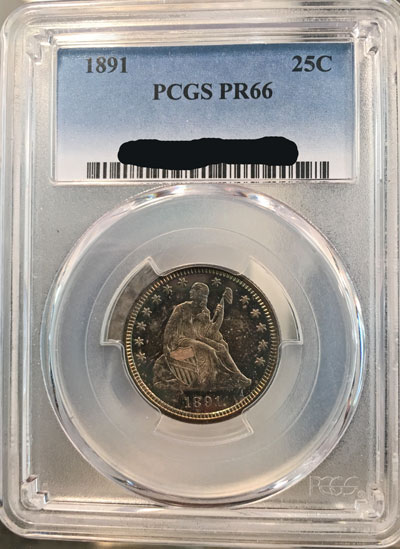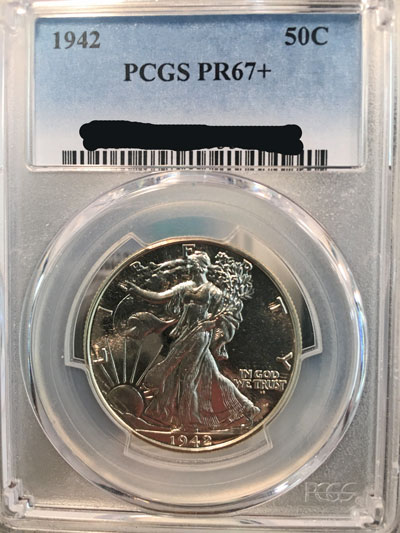© Copyright Atlanta Coin Expositions, 2008-2025. All Rights Reserved.
Several of the links on the pages within this web site go to affiliate vendors.
A vendor affiliation can mean a small monetary compensation to the web site owner at no additional cost to you.
Several of the links on the pages within this web site go to affiliate vendors.
A vendor affiliation can mean a small monetary compensation to the web site owner at no additional cost to you.
Coin Show
Information
Shop
General
Next Monthly Coin Show
Coin Show - Monthly Notes for January 2021
Mark your calendar and join us at the next show on February 14, 2021 in the hotel's Hamilton Restaurant.
The show will occur unless we are forced to close by state, county, local, hotel or COVID-19 officials. Check with this web site, the recorded show message (770-772-4359) or get on our mailing list to receive information about the shows.
Meanwhile, the February bourse will be filled with dealers and their showcases of coins, currency, bullion, exonumia, scripophily, semi-precious stones, jewelry and other intriguing items.
All visitors to the show are welcome whether buying, selling, trading or just looking at the many different items. Also, people can bring items to have the dealers provide free verbal appraisals.
IMPORTANT: Masks WILL BE REQUIRED to enter the show due to the continued concern about the COVID-19 virus.
Remember to visit the next Greater Atlanta Coin Show on Sunday, February 14, 2021 in the hotel's Hamilton Restaurant to buy, sell, trade or just browse among the many items on display.
The show will occur unless we are forced to close by state, county, local, hotel or COVID-19 officials. Check with this web site, the recorded show message (770-772-4359) or get on our mailing list to receive information about the shows.
Meanwhile, the February bourse will be filled with dealers and their showcases of coins, currency, bullion, exonumia, scripophily, semi-precious stones, jewelry and other intriguing items.
All visitors to the show are welcome whether buying, selling, trading or just looking at the many different items. Also, people can bring items to have the dealers provide free verbal appraisals.
IMPORTANT: Masks WILL BE REQUIRED to enter the show due to the continued concern about the COVID-19 virus.
Remember to visit the next Greater Atlanta Coin Show on Sunday, February 14, 2021 in the hotel's Hamilton Restaurant to buy, sell, trade or just browse among the many items on display.
The January 2021 Greater Atlanta Coin Show began the new year in the brighter, lighter, newly renovated Joe Mack Wilson ballroom filled with dealers and their displays of coins, currency, bullion and other collectibles.
Lots of visitors came to the bourse to enjoy a day of buying, selling, trading or just browsing among the treasures on display.
As always, we appreciate all the people - the visitors, the dealers, the security and the hotel's staff - for making the show a fun and interesting place to be. Thank you one and all.
Looking at the visitors, we saw lots of new faces. Welcome and we hope you had fun and will visit again.
Lots of visitors came to the bourse to enjoy a day of buying, selling, trading or just browsing among the treasures on display.
As always, we appreciate all the people - the visitors, the dealers, the security and the hotel's staff - for making the show a fun and interesting place to be. Thank you one and all.
Looking at the visitors, we saw lots of new faces. Welcome and we hope you had fun and will visit again.
Visitors also saw the hotel's renovation efforts continuing in the foyer, hallways and other parts of the main conference floor.
As for outside, it was a somewhat typical January day with temperatures only reaching into the 40s. That's okay, it was still a beautiful day to be out and about.
As for outside, it was a somewhat typical January day with temperatures only reaching into the 40s. That's okay, it was still a beautiful day to be out and about.
Since the December show, we obtained our 2021 schedule with the hotel and provided flyers to show the new monthly dates. Several of visitors picked up several flyers to share with their clubs and other interested people. Thank you.
As has been the case for the last several months, people came to the show looking for silver and gold.
In this market, dealers have difficulty keeping the precious metals in stock. In other words, it's difficult to find physical product.
With cause and effect, the high demand increases the cost and adds a premium over the metals' market prices.
That may continue to be the situation over the next several months.
Now, let's take a virtual tour of just a few of the items seen on the January 2021 bourse.
As has been the case for the last several months, people came to the show looking for silver and gold.
In this market, dealers have difficulty keeping the precious metals in stock. In other words, it's difficult to find physical product.
With cause and effect, the high demand increases the cost and adds a premium over the metals' market prices.
That may continue to be the situation over the next several months.
Now, let's take a virtual tour of just a few of the items seen on the January 2021 bourse.
Baccarat Crystal Perfume Bottles

Our first example includes these perfume bottles in the Rose Tiente Swirl pattern by Baccarat. They produced this particular style of perfume bottles from the late 1800s into the early 1900s.
Baccarat Crystal is a French manufacturer of fine crystal glassware located in Baccarat, France. They began their manufacturing in 1764 when King Louis XV of France gave permission to found a glassworks in the town of Baccarat in the Lorraine region in eastern France. Initially, they made window panes, mirrors and stemware until 1816 when they expanded into fine crystal.
On their web site, they describe their process:
"At the Baccarat manufactory, crystal blowers, cutters, engravers and gilders have been honing their talent to attain sheer perfection.
Baccarat Crystal is a French manufacturer of fine crystal glassware located in Baccarat, France. They began their manufacturing in 1764 when King Louis XV of France gave permission to found a glassworks in the town of Baccarat in the Lorraine region in eastern France. Initially, they made window panes, mirrors and stemware until 1816 when they expanded into fine crystal.
On their web site, they describe their process:
"At the Baccarat manufactory, crystal blowers, cutters, engravers and gilders have been honing their talent to attain sheer perfection.
"It takes 15 years to master the techniques, tap the infinite possibilities for sculpting crystal. Baccarat boasts the highest number of award-winning Best Craftsmen in France, more than any other French luxury House.
"The movements and gestures are ancestral, but Baccarat ingenious craftsmanship has always stood at the leading edge of innovation.
"Unique and timeless know-how which, from freehand cutting to brush applied raised relief gilding, translates tradition into creation."
These bottles present a rich Amberina coloring in shades from a deep ruby at the top gradually changing to a lovely amber on lower part of the molded swirl pattern body.
Whether containing perfume or just adding a colorful sparkle, these perfume bottles present a lovely display.
"The movements and gestures are ancestral, but Baccarat ingenious craftsmanship has always stood at the leading edge of innovation.
"Unique and timeless know-how which, from freehand cutting to brush applied raised relief gilding, translates tradition into creation."
These bottles present a rich Amberina coloring in shades from a deep ruby at the top gradually changing to a lovely amber on lower part of the molded swirl pattern body.
Whether containing perfume or just adding a colorful sparkle, these perfume bottles present a lovely display.
1833 Half Cent Coin
Our first coin example is this 1833 Half Cent Coin with the classic head obverse as made at the Philadelphia Mint from 1809 to 1835.
PCGS (Profession Coin Grading Service) graded this coin as a Mint State 64+ in Red/Brown.
Simplistically, they describe their MS64 grade as "average or better strike with scattered marks or hairlines, though none severe."
They assign "Plus Grades" only to those coins they determine have "exceptional eye appeal for the grade and constitute the top 30% of the coins in the grade."
Similarly, they define their Red/Brown designation for copper coins as having between 5% and 95% of their original color.
Oddly, the Red Book shows a total mintage of 103,000 for the 1833 half cent coin, however they caveat the number as having a potential issue within the Mint's records.
PCGS (Profession Coin Grading Service) graded this coin as a Mint State 64+ in Red/Brown.
Simplistically, they describe their MS64 grade as "average or better strike with scattered marks or hairlines, though none severe."
They assign "Plus Grades" only to those coins they determine have "exceptional eye appeal for the grade and constitute the top 30% of the coins in the grade."
Similarly, they define their Red/Brown designation for copper coins as having between 5% and 95% of their original color.
Oddly, the Red Book shows a total mintage of 103,000 for the 1833 half cent coin, however they caveat the number as having a potential issue within the Mint's records.
However, PCGS notes the total population as 120,000.
More important, perhaps, is the PCGS survival estimate at 200 coins in all grades. Whether 200 out of 103,000 or 200 out of 120,000, the 1833 half cent is a rare coin.
This coin is one of three graded by PCGS as MS64+, and there are only 22 coins graded higher within their grading records.
At 188 years old this year, this 1833 Classic Head Half Cent Coin is a very nice specimen of our early coinage.
More important, perhaps, is the PCGS survival estimate at 200 coins in all grades. Whether 200 out of 103,000 or 200 out of 120,000, the 1833 half cent is a rare coin.
This coin is one of three graded by PCGS as MS64+, and there are only 22 coins graded higher within their grading records.
At 188 years old this year, this 1833 Classic Head Half Cent Coin is a very nice specimen of our early coinage.

1891 Liberty Seated Quarter Dollar Coin

Our next coin, also minted in Philadelphia, is an 1891 Liberty Seated Quarter Dollar Coin graded by PCGS as Proof 66.
In 1891, the US Mint produced the quarters at their Philadelphia, New Orleans and San Francisco locations. However, only the Philadelphia facility struck the proof coins.
This coin is one of only 600 proof quarter coins minted in 1891. Of those, PCGS estimates 525 survive in all conditions with 500 of those being a grade of Proof 60 or better.
To date, they show they have graded 17 as PR66, two as PR66+, five as PR67 and two as PR68.
Out of an estimated population of 525, this particular PR66 coin has only nine graded higher in the PCGS records.
First produced in 1838, Christian Gobrecht designed the Liberty Seated Quarter Dollar Coin. In late 1839, the US Mint hired Robert Ball Hughes to make changes to the obverse design so the coin would strike better.
In 1891, the US Mint produced the quarters at their Philadelphia, New Orleans and San Francisco locations. However, only the Philadelphia facility struck the proof coins.
This coin is one of only 600 proof quarter coins minted in 1891. Of those, PCGS estimates 525 survive in all conditions with 500 of those being a grade of Proof 60 or better.
To date, they show they have graded 17 as PR66, two as PR66+, five as PR67 and two as PR68.
Out of an estimated population of 525, this particular PR66 coin has only nine graded higher in the PCGS records.
First produced in 1838, Christian Gobrecht designed the Liberty Seated Quarter Dollar Coin. In late 1839, the US Mint hired Robert Ball Hughes to make changes to the obverse design so the coin would strike better.
His new design added drapery at Liberty's left elbow, reduced the size of the rock, and placed Liberty's shield in an upright position. The changed design remained for over 50 years, from 1840-1891, for the silver quarter dollar coin.
Being from the last year of production, this quarter coin provides a nice example of the long-lived Liberty Seated design.
Being from the last year of production, this quarter coin provides a nice example of the long-lived Liberty Seated design.
1915-S Panama Pacific Commemorative Gold Dollar Coin

Moving to gold, the US Mint produced this gold commemorative dollar coin for the Panama-Pacific International Exposition held in San Francisco in 1915 to celebrate the opening of the Panama Canal.
The actually produced five different coins for the Exposition, a silver half dollar, a gold dollar, a gold quarter eagle, a round fifty-dollar coin and an octagonal fifty-dollar coin.
In total, there were just over 50,000 coins produced across the five different types with 15,000 being the gold dollars.
Charles Keck developed the design for the gold dollar with the head of a man representing a canal laborer on the obverse and two dolphins swimming around "ONE DOLLAR" on the reverse.
PCGS graded this particular specimen as Mint State 65 and show it as one of 1338 they have graded with that designation.
The actually produced five different coins for the Exposition, a silver half dollar, a gold dollar, a gold quarter eagle, a round fifty-dollar coin and an octagonal fifty-dollar coin.
In total, there were just over 50,000 coins produced across the five different types with 15,000 being the gold dollars.
Charles Keck developed the design for the gold dollar with the head of a man representing a canal laborer on the obverse and two dolphins swimming around "ONE DOLLAR" on the reverse.
PCGS graded this particular specimen as Mint State 65 and show it as one of 1338 they have graded with that designation.
Of the original 15,000 produced, PCGS estimates 12,000 have survived the last 100+ years.
They also estimate 10,000 have a current grade of MS60 or better with 3500 being MS65 or better.
Not only was the Expo held in San Francisco, the San Francisco Mint location produced all of the Panama-Pacific coins as well.
Neither very rare nor very common, the Panama-Pacific International Exposition Gold Dollar Coin maintains a value larger than bullion prices.
They also estimate 10,000 have a current grade of MS60 or better with 3500 being MS65 or better.
Not only was the Expo held in San Francisco, the San Francisco Mint location produced all of the Panama-Pacific coins as well.
Neither very rare nor very common, the Panama-Pacific International Exposition Gold Dollar Coin maintains a value larger than bullion prices.
1942 Liberty Walking Half Dollar Coin

In 1916, the US Mint introduced a new half dollar design by A. A. Weinman.
In his letter to R. W. Woolley, Director of the Mint, on May 23, 1916, Mr. Weinman described his new design:
"In my design for the half dollar, I have decided on a full length female figure of Liberty and have represented her enveloped in the folds of the stars and stripes, progressing in full stride toward the glorious dawn of a new day, carrying bunches of laurel and of oak symbolical of civil and of military glory. Her right hand is outstretched in bestowal of the spirit of liberty to the land of the free and the home of the brave."
Today, of course, we recognize this design as Liberty Walking.
In 1942, the Philadelphia Mint location struck 21,120 proof versions of the silver half dollar coin.
PCGS graded this particular 1942 half dollar coin as Proof 67+.
In his letter to R. W. Woolley, Director of the Mint, on May 23, 1916, Mr. Weinman described his new design:
"In my design for the half dollar, I have decided on a full length female figure of Liberty and have represented her enveloped in the folds of the stars and stripes, progressing in full stride toward the glorious dawn of a new day, carrying bunches of laurel and of oak symbolical of civil and of military glory. Her right hand is outstretched in bestowal of the spirit of liberty to the land of the free and the home of the brave."
Today, of course, we recognize this design as Liberty Walking.
In 1942, the Philadelphia Mint location struck 21,120 proof versions of the silver half dollar coin.
PCGS graded this particular 1942 half dollar coin as Proof 67+.
They estimate 18,500 of the proof coins have survived down through the 75+ years. Of those, they estimate 18,325 are grades of PR60 or better and 11,500 of those are PR65 or better.
Our PR67+ example is one of 104 PCGS has given that designation. To date, they show 86 graded PR68 and higher.
Basically, this particular coin shows the beauty of the design and the craftsmanship of the mint.
Our PR67+ example is one of 104 PCGS has given that designation. To date, they show 86 graded PR68 and higher.
Basically, this particular coin shows the beauty of the design and the craftsmanship of the mint.
1899 Five-Dollar Silver Certificate
Our last seen-at-the-show item is an 1899 Five-Dollar Silver Certificate known by currency collectors as the "Chief" or the "Indian" note.
It's interesting to review this note in various paper money resources and see how many names have been attributed to this chieftain. The easiest is Chief Running Antelope. The most interesting is Ta-to’-ka-in’-yan-ka.
CoinWeek has an excellent in-depth article telling of the history of the note including facts and early authors' speculation about the note and its portrait titled Running Antelope and the 1899 $5 Silver Certificate.
This particular note is one of eleven different signature pairs of the 1899 series of silver certificate five-dollar notes.
Most United States currency was signed by the Register of the Treasury and the Treasurer of the United States until 1923.
This note was signed by Teehee/Burke. Houston Benge Teehee was the Register of the Treasury from 3/24/1915 - 11/20/1919 while John Burke was the Treasurer from 4/1/1913 - 1/5/1921.
It's interesting to review this note in various paper money resources and see how many names have been attributed to this chieftain. The easiest is Chief Running Antelope. The most interesting is Ta-to’-ka-in’-yan-ka.
CoinWeek has an excellent in-depth article telling of the history of the note including facts and early authors' speculation about the note and its portrait titled Running Antelope and the 1899 $5 Silver Certificate.
This particular note is one of eleven different signature pairs of the 1899 series of silver certificate five-dollar notes.
Most United States currency was signed by the Register of the Treasury and the Treasurer of the United States until 1923.
This note was signed by Teehee/Burke. Houston Benge Teehee was the Register of the Treasury from 3/24/1915 - 11/20/1919 while John Burke was the Treasurer from 4/1/1913 - 1/5/1921.
Thus, this 1899 series note was produced in the 1915 to 1919 years.
The Bureau of Engraving produced 556,054,000 of this 1899 series until the early 1920s before retiring the design.
The five dollar silver certificate has always been one of the most popular denominations to collect. The 1899 $5 silver certificate is especially popular.
The value of the 1899 Five-Dollar Silver Certificate note is mostly determined by its condition with the serial number and signature combination adding value on some of the notes. A serial number under 100 or a serial number beginning with a star symbol will be worth more than a standard serial number.
Paper Money Guaranty (PMG) graded this specimen as Choice Very Fine 35 EPQ or Exceptional Paper Quality.
In other words this 1899 Five-Dollar Silver Certificate is a very nice piece of history and an excellent addition to any collector's cache.
The Bureau of Engraving produced 556,054,000 of this 1899 series until the early 1920s before retiring the design.
The five dollar silver certificate has always been one of the most popular denominations to collect. The 1899 $5 silver certificate is especially popular.
The value of the 1899 Five-Dollar Silver Certificate note is mostly determined by its condition with the serial number and signature combination adding value on some of the notes. A serial number under 100 or a serial number beginning with a star symbol will be worth more than a standard serial number.
Paper Money Guaranty (PMG) graded this specimen as Choice Very Fine 35 EPQ or Exceptional Paper Quality.
In other words this 1899 Five-Dollar Silver Certificate is a very nice piece of history and an excellent addition to any collector's cache.

